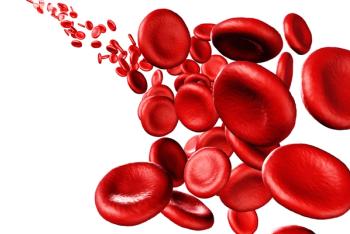
Oncology NEWS International
- Oncology NEWS International Vol 17 No 2
- Volume 17
- Issue 2
IRIS 6-year data confirm imatinib as standard CML Rx
Six-year results of the IRIS trial confirm imatinib (Gleevec) as the standard first-line therapy for chronic myelogenous leukemia
ATLANTASix-year results of the IRIS trial confirm imatinib (Gleevec) as the standard first-line therapy for chronic myelogenous leukemia, Andreas Hochhaus, MD, professor of internal medicine, the University of Heidelberg, Mannheim, Germany, said at ASH 2007 (abstract 25).
Overall survival at 6 years for patients receiving imatinib therapy was 88%. Dr. Hochhaus noted that if only CML-related deaths were taken into account, the estimated overall survival rate with imatinib was 95%.
"If this survival trend continues, many patients with CML may approach normal life expectancy with continued Gleevec treatment," said Brian Druker, MD, director of the of the Oregon Health & Science University Cancer Institute.
IRIS, launched in 2000, compared standard treatment with interferon-alfa plus cytarabine against imatinib in 1,106 patients with newly diagnosed Ph+ CML. Eventually, 66% of controls crossed over to imatinib, while only 2% on imatinib crossed over to interferon-alfa plus cytarabine. After 6 years, 181 patients had discontinued study treatment.
Event-free survival
At 6 years, event-free survival (EFS) for the imatinib patients was 83%, and progression-free survivalsurvival without CML progression to accelerated or blast phasewas 93%.
Dr. Hochhaus pointed out that annual event ratesie, loss of complete hematologic or major cytogenetic response, progression, or deathhave declined over the course of imatinib treatment, from a high of 7.5% in the second year of treatment to 0.8% in the 5th year and 0.4% in the 6th year.
Annual event rates for those achieving complete cytogenetic response (CCyR) declined from 5.4% in the 1st year to 0.3% in the 4th year, with no conversions to accelerated phase/blast crisis after the 3rd year.
Among patients with CCyR, 71% retained that status out to 6 years. Among those losing CCyR, 5% regained it and are still on imatinib. As of late January 2007, 63% (n = 349) of all imatinib-treated patients remained in CCyR.
Toxicity
Dr. Hochhaus noted that most grade 3-4 adverse events occurred early and declined in incidence with continued imatinib therapy. Importantly, he said, higher grade hematologic toxicity during years 1-2 was associated with worse EFS. Dr. Hochhaus commented that the lowered EFS may have been attributable to reduction of dose or discontinuation of imatinib therapy.
"The 88% overall survival with imatinib exceeds that of all other CML therapies," Dr. Hochhaus concluded. "Responses are durable, and the annual risk of progression decreases over time. Furthermore, there are no new safety findings with long-term follow-up."
Articles in this issue
almost 18 years ago
NLST article not balanced, critic of screening trial assertsalmost 18 years ago
M.D. Anderson and AstraZeneca form neuropathic pain alliancealmost 18 years ago
Good nilotinib responses in imatinib-resistant AP-CMLalmost 18 years ago
Virus linked to Merkel cell carcinomaalmost 18 years ago
Benefit of adjuvant RT/CT for pancreatic ca affirmedalmost 18 years ago
Recurrence Score helps select node+ pts for chemoalmost 18 years ago
For resectable liver mets: Preop chemotherapy or not?almost 18 years ago
Plerixafor boosts stem cell mobilization in myeloma ptsalmost 18 years ago
MRI shows second-hand smoke damagealmost 18 years ago
Assay has high sensitivity for hard-to-detect SLN metsNewsletter
Stay up to date on recent advances in the multidisciplinary approach to cancer.


















































































